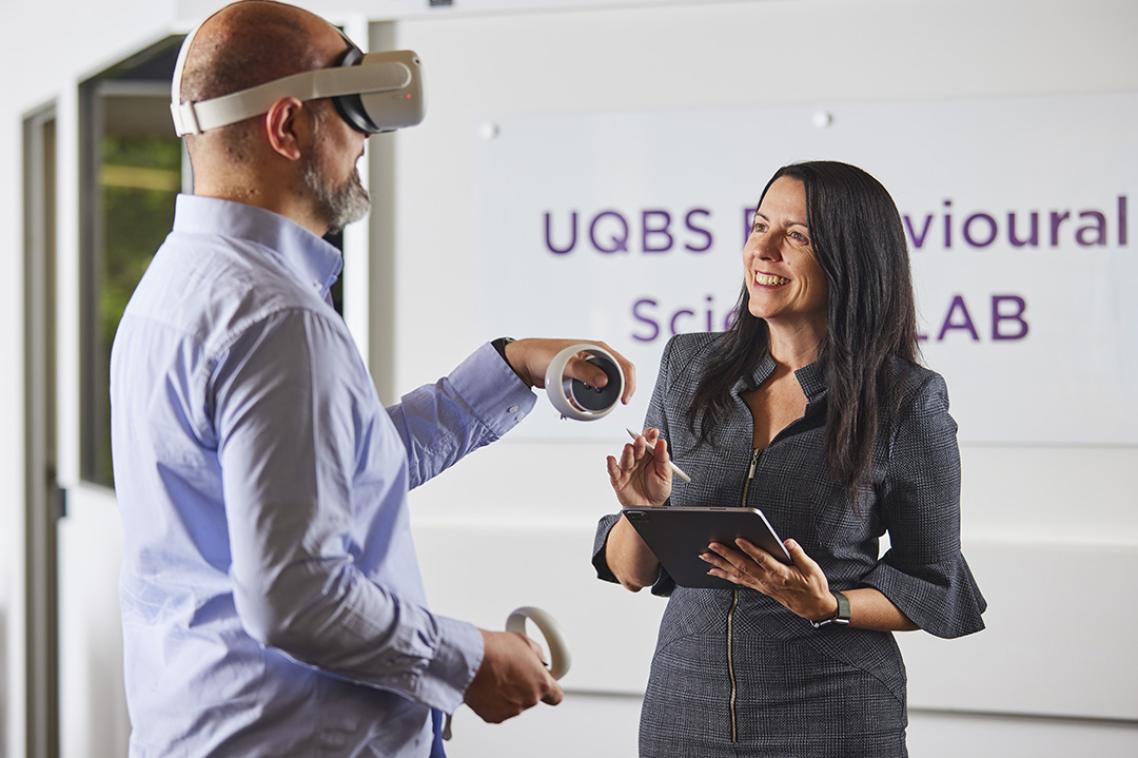Physicists shine light on hypersonics problems
While many researchers hope to see the light at the end of the tunnel, University of Queensland physicists are pioneering techniques to make the light go through it, instead.
More specifically, they are sending light beams through the world's fastest superorbital expansion tunnels, based at the University, to characterise the gas flows generated at hypersonic speeds. The work is being conducted by researchers in the University Physics Department's Centre for Laser Science.
The laser-based techniques will assist scientists internationally to design a new generation of more efficient space craft for re-entering the Earth's atmosphere at previously unachievable speeds of up to 15 or 16km/sec.
The project is headed by Associate Professor Halina Rubinsztein-Dunlop and University research fellow Dr Tim McIntyre, in close collaboration with Mechanical Engineering Department researchers.
In 1990 Emeritus Professor Ray Stalker of the Mechanical Engineering Department approached Dr Rubinsztein-Dunlop to develop non-invasive ways to measure activities inside the tunnels.
Previously, in these tunnels, conditions in the gas could be measured only by placing probes into the tunnel and this inevitably affected the flow. Another problem was that a probe placed in the tunnel gave readings at a single point, not throughout the flow.
Laser-based techniques allow scientists to study how light interacts with the gas and infer such properties as density, velocity and temperature.
The Physics Department successfully achieved Australian Research Council (ARC) funding to buy the nucleus of its now-extensive laser equipment.
Since 1991 the laser physics group with ARC and University of Queensland support has expanded to work in a large number of areas from hypervelocity flows to atom trapping and cooling, nonlinear laser dynamics, chaos studies, and laser micro-manipulation.
The group has developed an array of highly accurate, extremely fast (measurements can be taken in a 50-billionth of a second) and non-intrusive measurement techniques for use in the University's shock tunnels and expansion tubes (types of very high speed wind tunnels for modelling re-entry conditions for space vehicles). These techniques complement other probes used by the Mechanical Engineering Department's hypersonics research group.
Dr McIntyre and Dr Rubinsztein-Dunlop said the research group was fortunate to have access to the world's fastest ground test tunnels, giving an advantage over other laser physicists working with optics in test flows.
The collaboration with the hypersonics research group in the Mechanical Engineering Department allowed Physics staff and students to develop and test innovative optical methods. Physics Department PhDs currently involved in the work are Brad Littleton, Amberyn Thomas, Margaret Wegener, and Alexis Bishop.
For further information, contact Dr McIntyre, telephone 07 3365 3413.
Related articles

The lab that doesn’t lie
“Art Museums are the site of public forum.” Meet UQ Art Museum's Director
Media contact
UQ Communications
communications@uq.edu.au
+61 429 056 139
